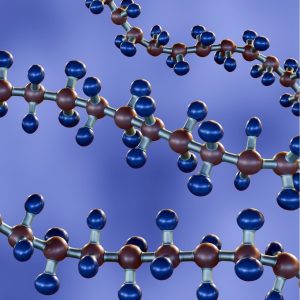Chemical & Pharmaceutical
INVENTIONS
Filing
We draft and file patent applications for new chemical inventions, ranging from pharmaceuticals to cosmetics to food products. Our clients range from small to medium sized enterprises to large multinational corporations. As a result of our wide variety of work, we are able to tailor our services to an individual client’s needs – no matter how big or small.
Prosecution
We have a vast amount of experience in obtaining patents not only in the UK and Europe but in countries across the globe from the Americas to Asia and everywhere in between, with the assistance of trusted patent attorneys in other jurisdictions. A detailed understanding of patent law across multiple jurisdictions helps us to assist our clients with preparing and executing global patent prosecution strategies in an effective manner.


Chemical & Pharmaceutical
Oppositions & appeals
Contentious Work
Our Oppositions and Appeals teams are also active in contentious matters, be that attacking or defending patents. The team has decades worth of experience in handling multi-party EPO oppositions and appeals, including collaborating with other opponents where advantageous, and effectively presenting arguments in the written and oral parts of the proceedings.
Freedom-to-Operate
In addition to securing patents for our clients, we also regularly advise on infringement risks arising from third party patent rights. We are able to conduct searches for relevant third-party patent rights that may be of relevance to our client’s commercial activities and advise accordingly on any infringement risks that we identify along with steps that can be taken to mitigate these risks.
Our specialist patent attorneys
Our UK and European Patent Attorneys and Chartered Trade Mark Attorneys have degrees and Ph.Ds from top UK Universities, but are qualified by experience at the coal face of cutting edge, and critically commercial, technologies.
Recent Insights
Read the latest insights from the Schlich team reporting recent cases relevant to the chemical & pharmaceutical sector.
G 1/23 confirms that products placed on the market before the effective date of a European patent application constitute prior art, regardless of whether they can be reproduced
On 2 July 2025, the EPO’s Enlarged Board of Appeal (EBA) issued its decision in G 1/23. The referral stemmed from T 0438/19, an appeal against the decision of an opposition division to reject an opposition against a European patent directed to a material for encapsulating a solar cell which comprises an ethylene/alpha-olefin copolymer with certain defined properties, including a content of aluminium element of from 10 to 500ppm. D1 disclosed a commercially available copolymer, ENGAGE® 8400, which the opponent/appellant sought to rely on as the closest prior art for their inventive step challenge; however, the Patentee argued, with reference to G 1/92, that ENGAGE® 8400 cannot be reproduced (i.e., it is not enabled) and therefore it has not been made available to the public within the meaning of Article 54(2) EPC and thus is not a suitable starting point for the assessment of inventive step. Grappling with how to interpret G 1/92, the Board in T 0438/19 referred three questions to the EBA focused on understanding whether a commercial product, put on the market before the filing date of a European patent application, can be excluded from the state of the art for the sole reason that it could not be reproduced. The EBA has now answered, and the short answer is no!
A Legal Framework for Considering Second Medical Use Claims at the UPC: Sanofi vs Regeneron
The jurisprudence of the United Patent Court (UPC) is relatively new and thus new aspects frequently arise. A decision of the Dusseldorf local division of the UPC may provide a framework for assessing infringement of second medical use claims, which might be persuasive to other UPC courts.
Safestand stands taller as Court of Appeal finds trestle designs valid
The recent Court of Appeal decision in Safestand Limited v Weston serves as a reminder of the importance of ensuring that representations provided as part of a design application are clear and consistent so as to ensure that upon an objective assessment, the representations are found to relate to a single product and not a collection of different embodiments.
Landmark CJEU judgement opens up new avenues for European patent litigation
In a recent landmark judgement, the CJEU confirmed the possibility of European patent holders being able to consolidate actions for patent infringement across multiple EU and non-EU member states at a single EU court. For patent holders looking to assert their IP in an efficient, and likely more cost-effective and harmonious manner, the implications of the CJEU decision on enforcement strategies before both national courts and the UPC are noteworthy.
When it comes to Post Filed Data, the Earlier the Better – A Brief Reminder Following G 2/21
This recent decision of the EPO Boards of Appeal, T 1865/22, reminds applicants to include clear details of the claimed technical effect in the application as filed and to file evidence in support of said technical effect as early as possible
UniQure’s Haemophilia B gene-therapy patent found valid – and infringed by Pfizer
The range of gene-therapies available to patients is ever expanding and it was only a matter of time before a conflict arose that had to be considered by the UK patent courts. Now uniQure has defended its patent for a Haemophilia B gene therapy against a revocation action brought by Pfizer.
The Federal Circuit clarifies conflicts arising between Patent Term Adjustment and Obviousness-type Double Patenting
We perceive a sigh of relief from some patent holders following issue of the US Federal Circuit’s decision in Allergan USA v. MSN Labs, 24-1061 (Fed. Cir. August 13, 2014) (“Allergan”). This decision appears to forestall the revocation of some patents following the concerning precedential Federal Circuit decision In re Cellect (No. 22-1293) (“Cellect”).
What Satisfies the Palate of the EPO’s Boards of Appeal? Fish Oil and Fruit Juice, Apparently…
In a recent decision, the EPO’s Boards of Appeal have confirmed the importance of filing data to support arguments relating to sufficiency of disclosure in EPO opposition proceedings. The patent concerned related to a mixture of fish oil and fruit juice which was alleged to have anticancer properties. The opponent argued the constituents required to achieve the anticancer effect were not sufficiently disclosed, but failed to provide enough data to convince the Board of Appeal. Hence, the Board was satisfied the claimed composition was sufficiently disclosed and ordered that the patent be maintained in amended form.
Get in touch

Our team of UK and European Patent Attorneys and Chartered Trade Mark Attorneys are highly knowledgeable and experienced in assisting clients with all aspects of their IP needs.
Contact us now to find out more about how we could help you and your business.














